Over 50,000 years ago a meteor hit the earth, creating a depression in which a natural lake was formed. This is not new or exciting, over time, many meteors of all shapes and sizes have hit earth. The biggest impact was 1.8 million years ago and caused the largest known depression in South Africa. However what is exciting is that the one that occurred a little closer in time by a ball of fire travelling at a speed of 80,000 km per hour, creating the only hyper impact crater in basaltic rock, is right here in the heart of Maharashtra, no more than a day’s journey from any major Indian city.
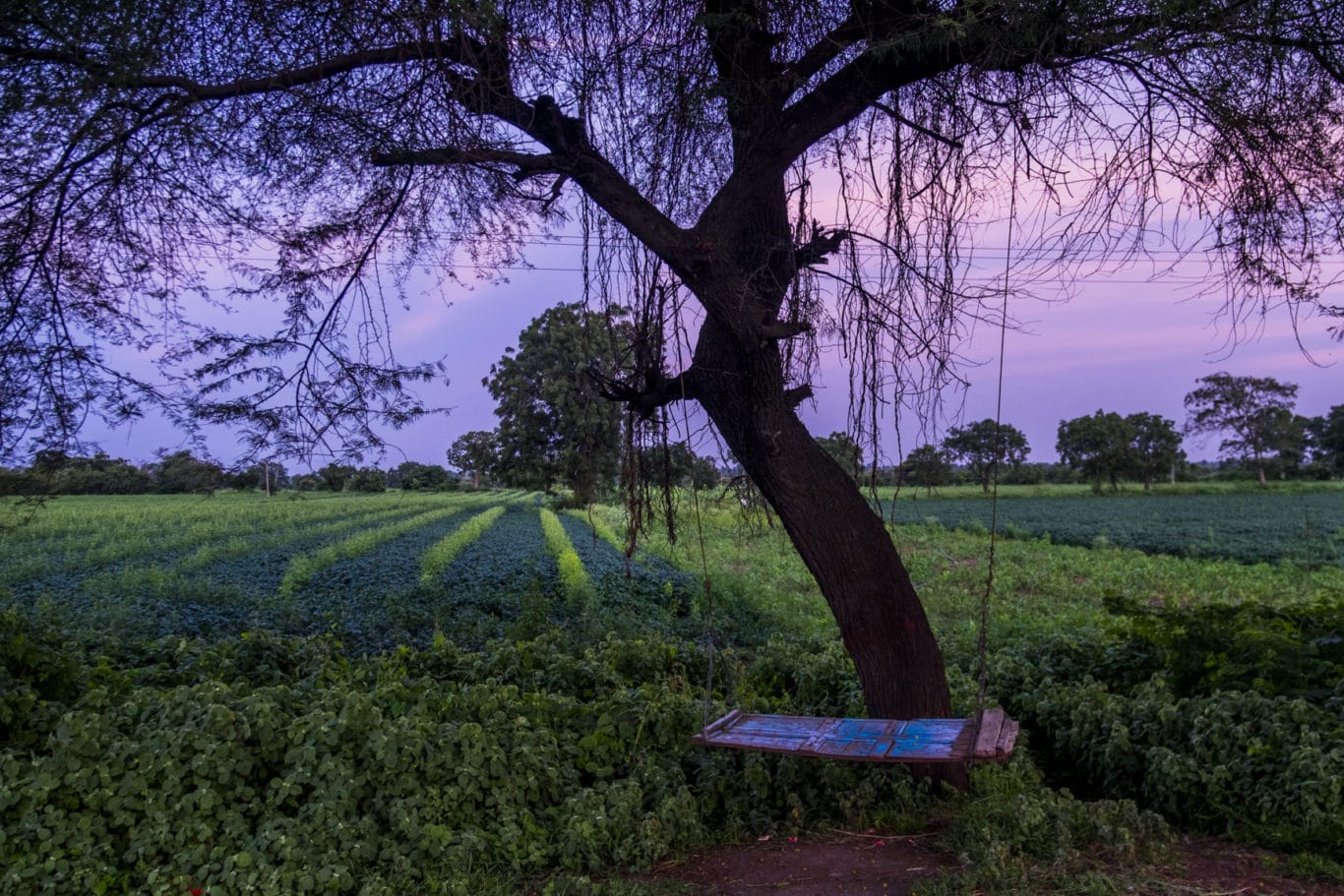
There are four main reasons why we think Lonar needs to get on your travel list right away. One, it’s incredibly beautiful, the entire crater is one large thick forest with the lake at the bottom; two, the entire lake is surrounded by cool ruins of temples several hundred years old; three, the lake and forest is paradise for animal and bird watchers; and four, simple put it’s not every day that you get to say you trekked down to the bottom of a really old crater and picnicked with the temple caretaker.
The crater is deep in rural Maharashtra, and the drive, along fairly decent village roads, during the monsoon to get to Buldhana district is lovely. There are green and yellow fields all the way to the horizon, broken only by low bushes resplendent with flowers, clusters of trees and the occasional farmers hut. The road leads you to Lonar town, and just short of the town, through a break in the trees you witness your first glimpse of the crater and lake. It is one of those occasions that leave you both speechless and extremely excited all at once. We immediately stopped the car, jumped out and ran to the protective fencing installed by the ASI. That first glimpse of the massive dark green natural bowl with a light green lake at the bottom is one for the memory bank.
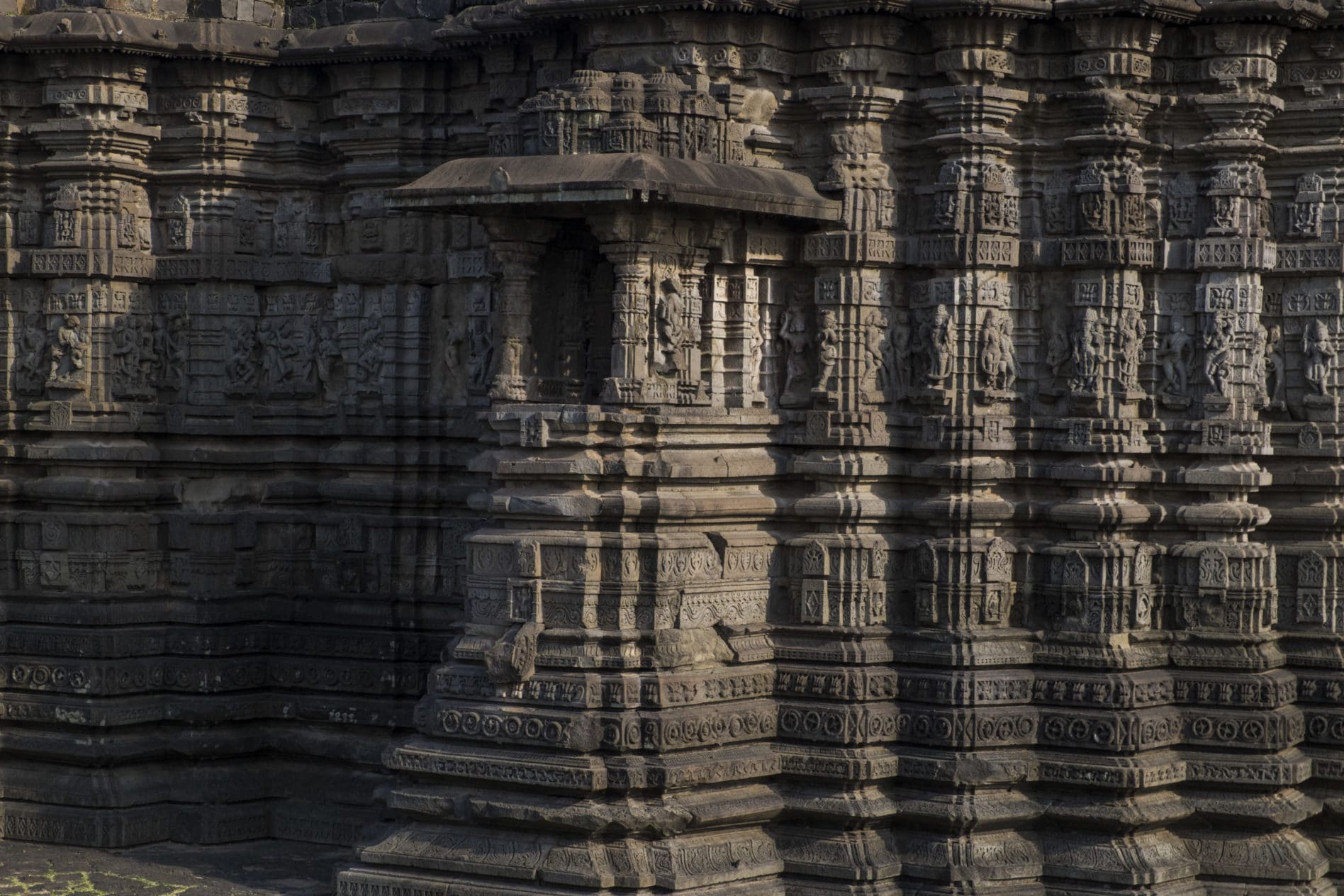
We got to our MTDC resort, the only decent place to stay, and after check in formalities, some much required food, we got all the required information and set off to explore. The town of Lonar is small and can be explored in a couple of hours. The older part of town is full of crumbling old homes, with wooden balconies and trellised windows reminiscent of the old town of Mandvi in Gujarat. Many of these old homes, though occupied, are protected by the ASI. In the middle of the old town lies the Daitya Sudan Vishnu Temple built by the Chalukyas that ruled Southern and Central India between the 6th and 12th Century. The temple, a squat structure built in the shape of an irregular star, is full of Khajuraho style erotic carvings on the outside and is similar in style to the Hoylasa temples we’d seen in southern Karnataka, over a 1000 km away. Which makes sense, since the Hoysala architecture of the 11th Century draws a lot of inspiration and influence from the Badami Chalukya architectural styles of the 8th century. We felt rather pleased with ourselves that not only had we been able to recognize the style of the temple and place it historically, we could also connect it to ones we’d seen earlier.
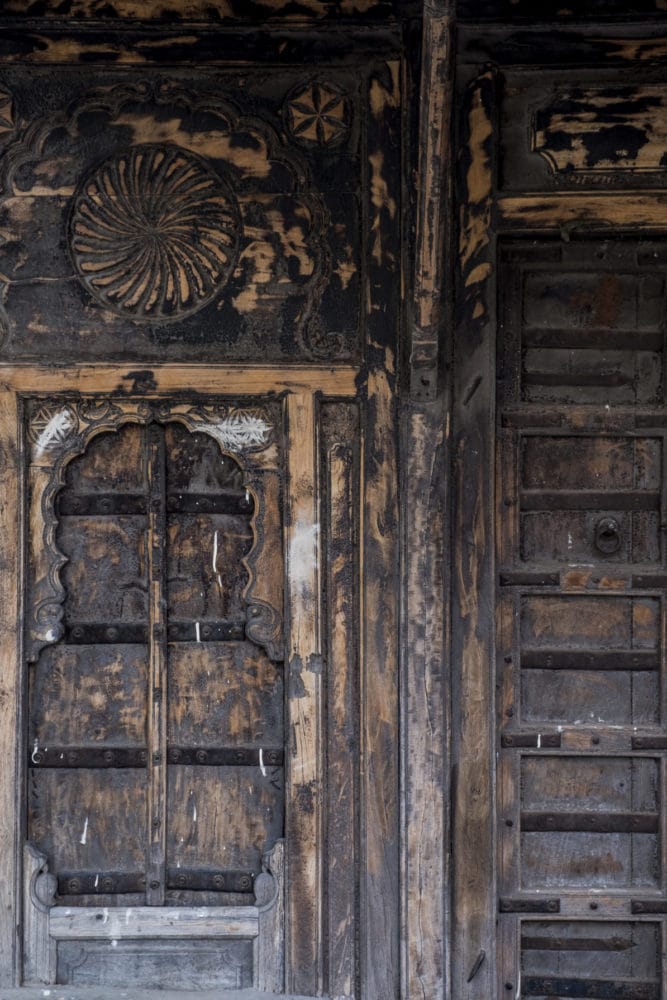
People in Lonar are similar to other smaller towns across the country, curious about visitors and ever eager to help. We were told, several times over, of the legend of Lonar and how the crater was formed according to ancient belief. It is said that Lord Vishnu rid the town of a terrible demon by stamping on the demon, and he brought his foot down so hard causing a crater in the earth! As legends go, it’s a good one and the people of Lonar love to tell the tale. There is another unique temple, the Gomukh Temple, built in levels at one end of the crater on the hill side, with a small spring that has an unknown source of water. Many believe it is holy water from the Ganga. Meteor or a foot, the crater is a unique natural wonder and is both alkaline and saline, with fresh water coming in through two small underground streams. The crater is 200 meters deep and it takes about 15 minutes to reach the bottom. Be warned, the heavy sulfur in the water creates a very unpleasant smell. The circumference of the lake is almost 5 km, and an easy walk. Apart from the animals you can spot if lucky, the circumference has 12 temples built by various empires. The oldest were built by the Chalukyas, and are similar to the one we saw in town. Not very large, many are now in ruins, inhabited largely by bats, rats, and the occasional python.
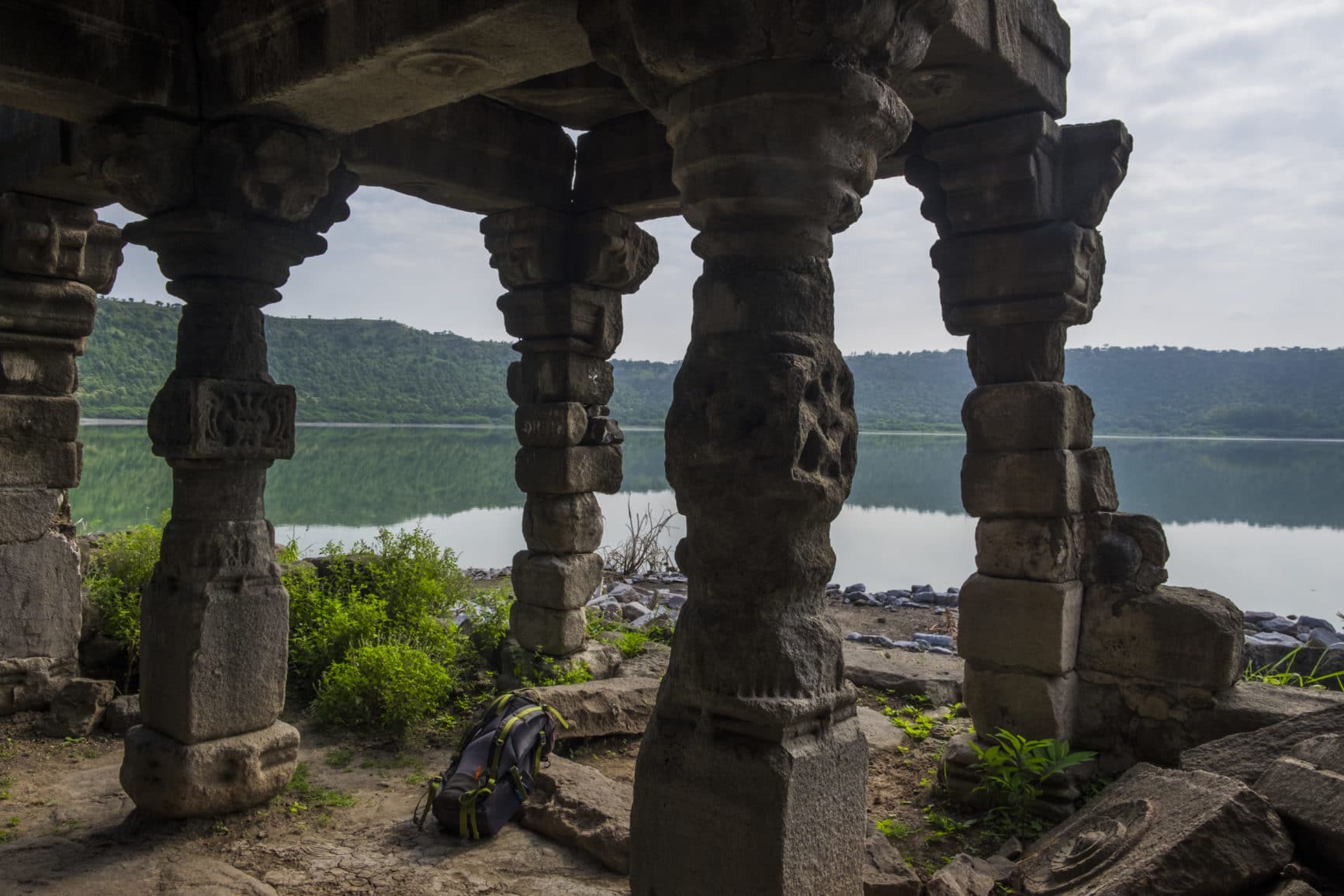
One of the temples is still in daily use, and the caretaker Kailash is welcoming and helpful. Devoid of fish, the lake is a bird watchers paradise with crow pheasants, blue jays, bee-eaters, ducks, lapwings, minivets, spot-bills, swallows, and woodpeckers, including some that migrate to the lake in winter from Ladakh. The forest around is also home to snakes, monitor lizards, gazelles, mongoose, langurs and apparently the occasional leopard. We spent a few hours exploring the area around the lake hoping to find a meteor rock, checking out the ruins and sharing a small but yummy lunch with the caretaker. People come from all over the world he told us, geologists, astronomers, ecologists and the region is an ongoing subject of investigation and study. Lonar, along with other craters around the world, are a means of studying moon minerals and understanding what exists in space. Human activity along the plateau has threatened the lake and its unique ecosystem and efforts are underway to preserve and protect.
Standing at the top of the crater looking down at this biodiversity bowl is an incredibly cool experience. The forest, the temple ruins, the lake and the funky little town of Lonar all make for an interesting couple of days, one not to be missed.
Useful Information
How to get there: Lonar is about a 3-4 hour drive from Aurangabad if you have your own car, along the Aurangabad-Nagpur Road. The only public transport is by bus, and you can get direct buses from Jalna or one via Sultanpur.
Where to Stay: The MTDC Resort is closest to the lake and is a decent option for stay and food. The resort can be booked through the Maharashtra Tourism Site. You can also stay in Aurangabad and visit as a day trip, though we recommend staying for one night at least.
Don’t Miss: Apart from the crater and the temples at the base, don’t miss the Daitya Sudan temple in the heart of Lonar town. Make sure to take a walk around the town and check out the funky old homes and talk to the friendly people. Make your way to the Gomukh temple for some good views of the crater and the surrounding fields.
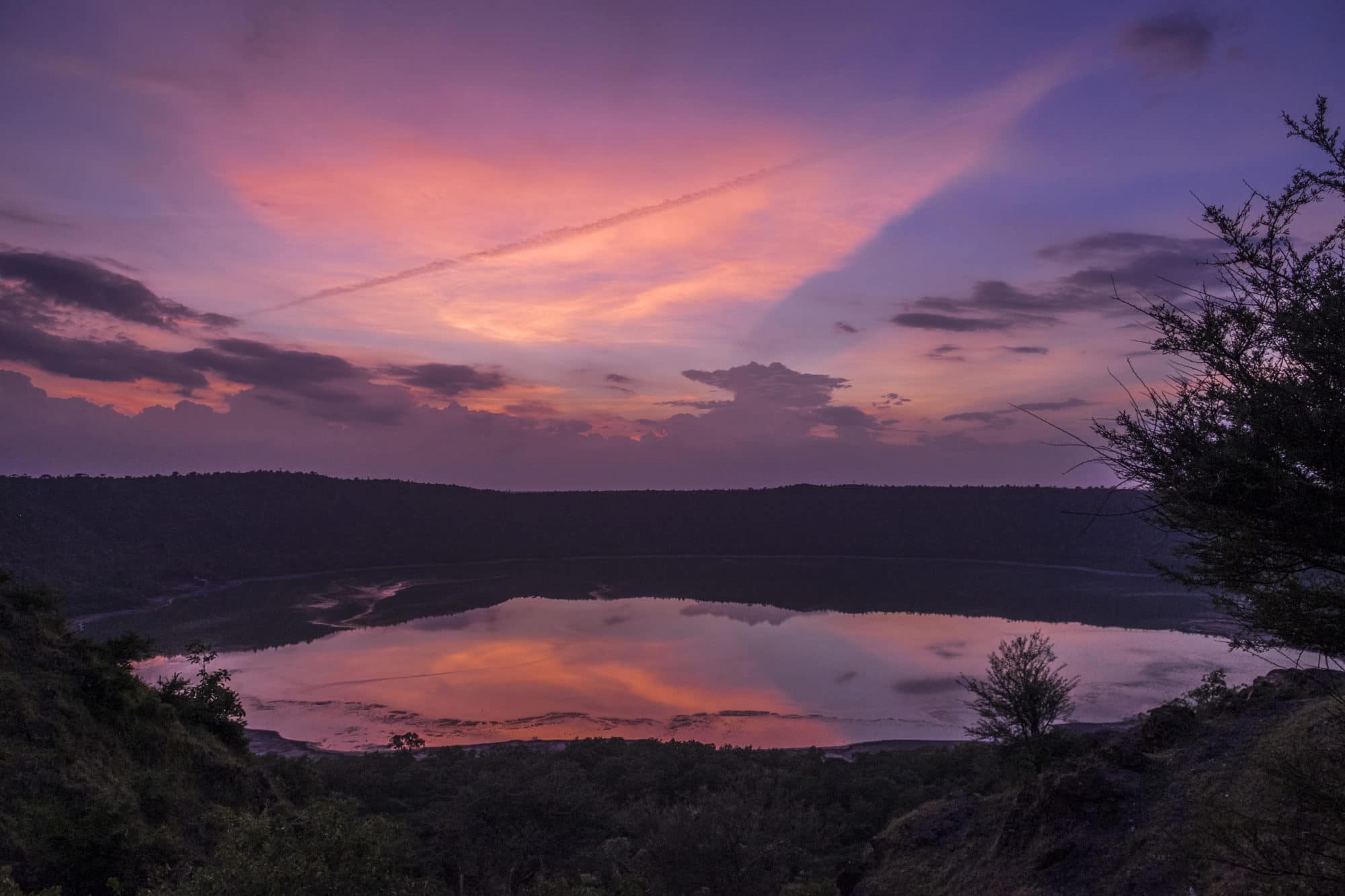
Super cool pictures! I’ve been wanting to go to Lonar for a while now, hopefully I’ll make a monsoon visit next year. Surprised that occupied houses are under ASI protection, must be quite a sight then!
It’s a fascinating place, so much more than just the crater.
lovely photos…….
Thanks Sudhir, Glad you liked them! 🙂
incredible !!
Thank you Reema, it is a pretty unique place!
It looks absolutely stunning!
Thanks. It really is!